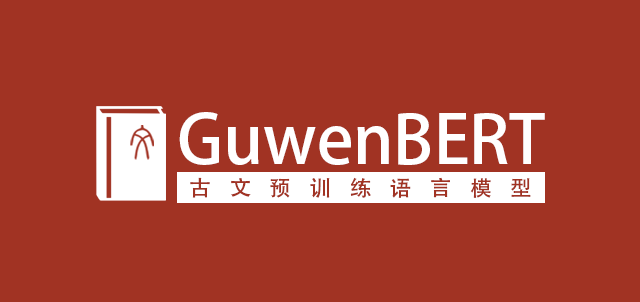|
--- |
|
language: |
|
- "zh" |
|
thumbnail: "https://user-images.githubusercontent.com/9592150/97142000-cad08e00-179a-11eb-88df-aff9221482d8.png" |
|
tags: |
|
- "chinese" |
|
- "classical chinese" |
|
- "literary chinese" |
|
- "ancient chinese" |
|
- "bert" |
|
- "pytorch" |
|
license: "apache-2.0" |
|
pipeline_tag: "fill-mask" |
|
widget: |
|
- text: "[MASK]太元中,武陵人捕鱼为业。" |
|
- text: "问征夫以前路,恨晨光之[MASK]微。" |
|
- text: "浔阳江头夜送客,枫叶[MASK]花秋瑟瑟。" |
|
--- |
|
|
|
# GuwenBERT |
|
|
|
## Model description |
|
 |
|
|
|
This is a RoBERTa model pre-trained on Classical Chinese. You can fine-tune GuwenBERT for downstream tasks, such as sentence breaking, punctuation, named entity recognition, and so on. |
|
|
|
For more information about RoBERTa, take a look at the RoBERTa's offical repo. |
|
|
|
## How to use |
|
|
|
```python |
|
from transformers import AutoTokenizer, AutoModel |
|
|
|
tokenizer = AutoTokenizer.from_pretrained("ethanyt/guwenbert-base") |
|
|
|
model = AutoModel.from_pretrained("ethanyt/guwenbert-base") |
|
``` |
|
|
|
## Training data |
|
|
|
The training data is daizhige dataset (殆知阁古代文献) which is contains of 15,694 books in Classical Chinese, covering Buddhism, Confucianism, Medicine, History, Zi, Yi, Yizang, Shizang, Taoism, and Jizang. |
|
76% of them are punctuated. |
|
The total number of characters is 1.7B (1,743,337,673). |
|
All traditional Characters are converted to simplified characters. |
|
The vocabulary is constructed from this data set and the size is 23,292. |
|
|
|
## Training procedure |
|
|
|
The models are initialized with `hfl/chinese-roberta-wwm-ext` and then pre-trained with a 2-step strategy. |
|
In the first step, the model learns MLM with only word embeddings updated during training, until convergence. In the second step, all parameters are updated during training. |
|
|
|
The models are trained on 4 V100 GPUs for 120K steps (20K for step#1, 100K for step#2) with a batch size of 2,048 and a sequence length of 512. The optimizer used is Adam with a learning rate of 2e-4, adam-betas of (0.9,0.98), adam-eps of 1e-6, a weight decay of 0.01, learning rate warmup for 5K steps, and linear decay of learning rate after. |
|
|
|
## Eval results |
|
|
|
### "Gulian Cup" Ancient Books Named Entity Recognition Evaluation |
|
|
|
Second place in the competition. Detailed test results: |
|
|
|
| NE Type | Precision | Recall | F1 | |
|
|:----------:|:-----------:|:------:|:-----:| |
|
| Book Name | 77.50 | 73.73 | 75.57 | |
|
| Other Name | 85.85 | 89.32 | 87.55 | |
|
| Micro Avg. | 83.88 | 85.39 | 84.63 | |
|
|
|
|
|
|
|
|
|
## About Us |
|
|
|
We are from [Datahammer](https://datahammer.net), Beijing Institute of Technology. |
|
For more cooperation, please contact email: ethanyt [at] qq.com |
|
|
|
> Created with ❤️ by Tan Yan [](https://github.com/Ethan-yt) and Zewen Chi [](https://github.com/CZWin32768) |